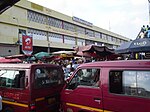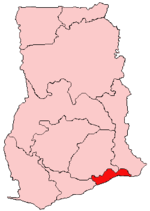The Gold Coast was a British Crown colony on the Gulf of Guinea in West Africa from 1821 until its independence in 1957 as Ghana. The term Gold Coast is also often used to describe all of the four separate jurisdictions that were under the administration of the Governor of the Gold Coast. These were the Gold Coast itself, Ashanti, the Northern Territories protectorate and the British Togoland trust territory.The first European explorers to arrive at the coast were the Portuguese in 1471. They encountered a variety of African kingdoms, some of which controlled substantial deposits of gold in the soil. In 1483, the Portuguese came to the continent for increased trade. They built the Castle of Elmina, the first European settlement on the Gold Coast. From here they acquired slaves and gold in trade for European goods, such as metal knives, beads, mirrors, rum, and guns. News of the successful trading spread quickly, and British, Dutch, Danish, Prussian and Swedish traders arrived as well. The European traders built several forts along the coastline. The Gold Coast had long been a name for the region used by Europeans because of the large gold resources found in the area. The slave trade was the principal exchange and major part of the economy for many years. In this period, European nations began to explore and colonize the Americas. Soon the Portuguese and Spanish began to export African slaves to the Caribbean, and North and South America. The Dutch and British also entered the slave trade, at first supplying slaves to markets in the Caribbean and on the Caribbean coast of South America.The Royal Trading Company was established by the Crown in 1752 to lead its trading in Africa. It was replaced by the African Company of Merchants, which led the British trading efforts into the early 19th century. In 1821, the British government withdrew their charter and seized privately held lands along the coast. In 1821, the government formed the British Gold Coast colony, after having taken over the remaining interests of other European countries. They purchased and incorporated the Danish Gold Coast in 1850 and the Dutch Gold Coast, including Fort Elmina, in 1872. Britain steadily expanded its colony through the invasion and subjection of local kingdoms as well, particularly the Ashanti and Fante confederacies.The Ashanti people had controlled much of the territory of Ghana before the Europeans arrived and were often in conflict with them. In the 21st century they continue to constitute the largest ethnic community in Ghana. Four wars, the Anglo-Ashanti Wars, were fought between the Ashanti (Asante) and the British, who were sometimes allied with the Fante.During the First Anglo-Ashanti War (1822–24), the two groups fought because of a disagreement over an Ashanti chief and slavery. The British had abolished the Atlantic slave trade but kept the institution in its colonies until 1834. Tensions increased in 1874 during the Second Ashanti War (1873–74) when the British sacked the Ashanti capital of Kumasi. The Third Ashanti War (1893–94) occurred because the new Ashanti ruler Asantehene wanted to exercise his new title. From 1895 to 1896 the British and Ashanti fought in the Fourth and final Ashanti War, where the Ashanti fought for and lost their independence. In 1900 the Ashanti Uprising took place. The British suppressed the violence and captured the city of Kumasi. At the end of this last Ashanti War, the territory of the Ashanti people became a British protectorate on 1 January 1902.By 1901, the British had established a colony incorporating all of the Gold Coast, with its kingdoms and tribes considered a single unit. The British exploited and exported a variety of natural resources such as gold, metal ores, diamonds, ivory, pepper, timber, grain and cocoa. The British colonists built railways and a complex transport infrastructure to support the shipment of these commodities. This formed the basis for the transport infrastructure in modern-day Ghana.By 1945, in the wake of a major colonial role in the Second World War, nationalists in the Gold Coast took a leadership role in demanding more autonomy. In 1951–55 they shared power with Britain. By 1956, British Togoland, the Northern Territories Protectorate and the Ashanti protectorate were merged with the Gold Coast to create one colony, which became known as the Gold Coast. The Ghana Independence Act 1957 constituted the Gold Coast Crown Colony as part of the new dominion of Ghana.





